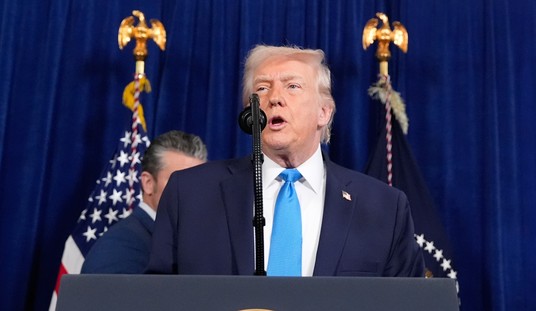The U.S. dollar has enjoyed its position as the global currency reserve favored by central banks worldwide since the end of WWII. (“Petrodollar” refers to the global trade of oil in the U.S. dollar, which is widely accepted as the driver of dollar hegemony.) This status has underpinned American economic dominance; at one point, the dollar was almost considered as good as gold as a long-term store of value. But as I and others at PJ Media have noted, the dollar’s dominance is now on the decline. And in a hurry, relatively speaking.
Central banks around the world have apparently taken notice of the peril that investing and trading in dollars might pose to their economies in the not-so-long-term, and have accordingly made alternative investment decisions.
Via CNBC, Feb 1, 2023 (emphasis added):
Gold demand soared to an 11-year high in 2022 on the back of “colossal central bank purchases, aided by vigorous retail investor buying,” according to the World Gold Council.
Annual gold demand jumped 18% to 4,741 tons (excluding over-the-counter or OTC trading) across the year, the largest annual figure since 2011, fueled by record fourth-quarter demand of 1,337 tons.
Key to the surge was a 55-year high of 1,136 tons bought by central banks across the year, the industry-backed group revealed, noting that the majority of these purchases were “unreported.”
This marked a 152% increase from 2021, when central banks bought just 450 tons of gold, and the World Gold Council attributed the spike to geopolitical uncertainty and high inflation.
Via Technocracy, August 8, 2023 (emphasis added):
Despite significant selling by Turkey that slowed net central bank gold buying in the second quarter, central banks added a record amount of gold to their reserves through the first half of 2023.
Net central bank gold purchases totaled 387 tons through the first half of the year, according to data compiled by the World Gold Council. That was the highest first-half total since the organization started compiling quarterly data in 2000.
Related: Saudi Arabia Applies to Join BRICS, Further Threatens U.S. Petrodollar
The Chinese would, obviously, very much welcome the widespread adoption of their own currency, the yuan, in lieu of the dollar.
Via GIS, August 21, 2023 (emphasis added):
When leaders of the BRICS group of emerging economies – Brazil, Russia, India, China and South Africa – convene at a summit in Johannesburg this week, de-dollarization and the establishment of a common currency will be at the top of the agenda.
Across Southeast Asia, Africa and the Middle East, there are now concerted efforts to diminish the influence of the United States dollar. As the world’s largest trading nation, China has championed the internationalization of the yuan for several years. The Russia-Ukraine conflict appears to have elevated the status of the Chinese currency…
However, the yuan has many drawbacks. Lack of convertibility remains an obstacle for many global investors. The ability to control capital flows remains extremely important for Chinese authorities. Without it, large amounts of capital will flow out of China in search of safety. A fully internationalized yuan is unlikely to happen unless Beijing allows greater currency freedom and both inward and outward investment, and fully establishes the rule of law.
Related: Sanctions Fail: Russia Now Selling More Oil Now Than Before the War
Thus, for the moment, it seems physical stores of value such as gold, which are not open to manipulation by governments and the machinations of mercurial markets in the same way that fiat currencies are, will remain king for the foreseeable future.










Join the conversation as a VIP Member